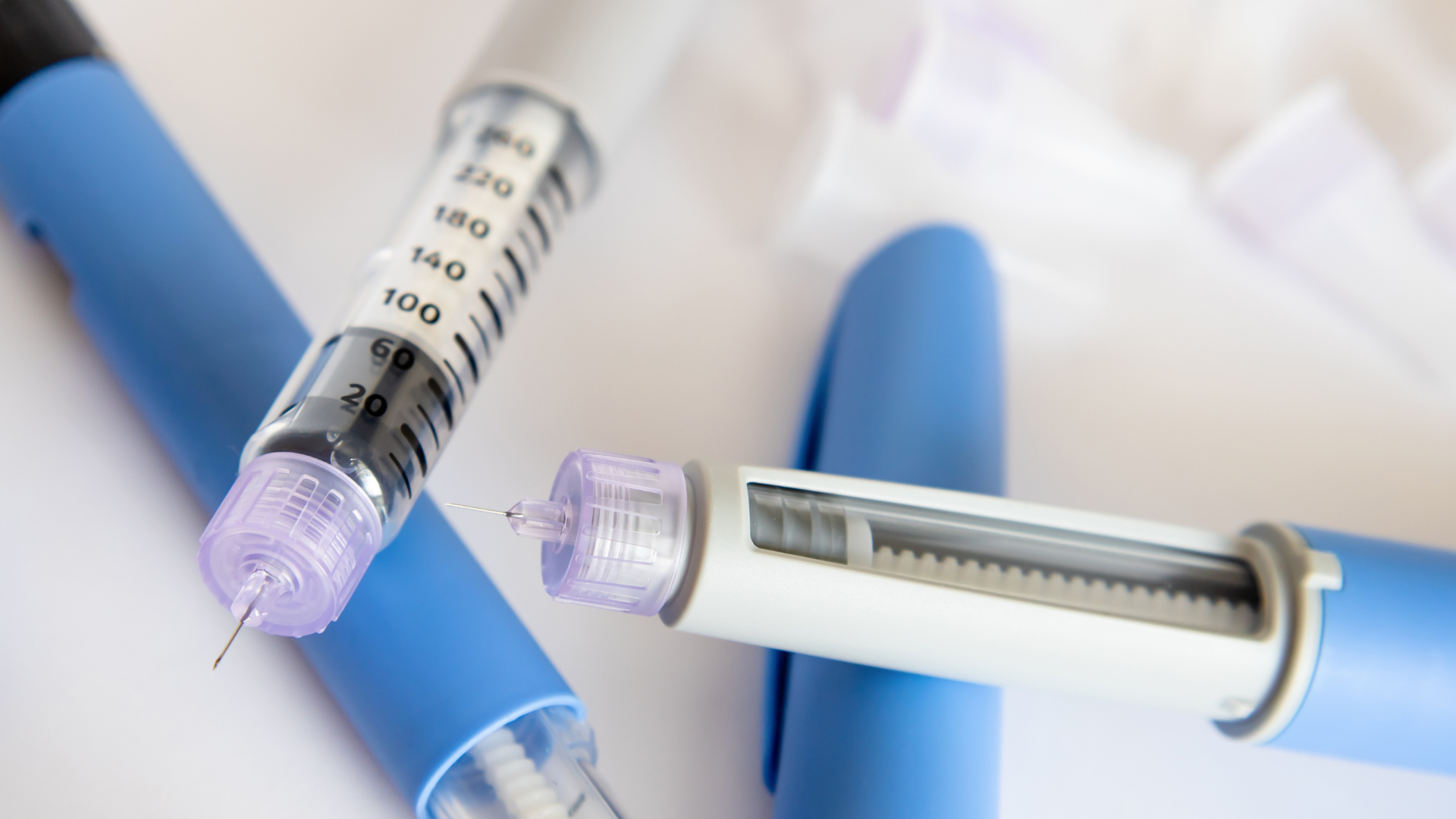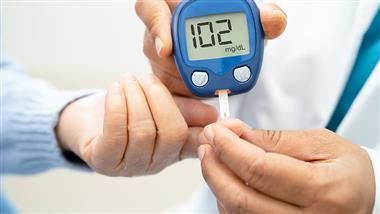10 Tips for Keeping Your Skin Safe This Summer

Maximize fun in the sun this summer with our skincare guide for people with diabetes. Here we share tips for how to protect your skin and stay healthy during the hottest months of the year.
For most of us, summer is a period we look forward to all year long. Beautiful weather, weekend getaways, and frequent excursions to the beach or pool. And best of all, plenty of time with friends, family, and loved ones for all those one-of-a-kind magic summer memories we cherish so much.
With all that fun to be had – plus regular commitments like work and keeping the house and yard in check – it’s safe to say that summer is undoubtedly one of the busiest times of the year. While that busyness is great in theory, for those of us living with any form of diabetes, the challenges of summer are amplified.
Eating right, maintaining our numbers, getting in plenty of activity, avoiding lows – it can be a lot. But with a little planning, it’s possible for us to control our diabetes (instead of letting the condition control us) so we can have the fantastic summer we’ve all been dreaming of.
Check out our 10-step summer guide for people with diabetes including tips for skincare, avoiding sunburns, protecting your eyes, and safely having fun in the sun.
1. Plan ahead
One of the biggest challenges of living with diabetes and trying to make the most of summer is keeping blood glucose levels in range. Will my numbers get too low while I’m out swimming or on a morning bike ride? Will they jump way up if I indulge too much at a family picnic?
“These are fears a lot of people with diabetes go through over the summer months,” said Gary Scheiner, a certified diabetes educator and exercise physiologist. Scheiner knows these concerns firsthand, having lived with type 1 diabetes for more than three decades.
“It can be tough dealing with physical activity and keeping glucose from tanking when people are outdoors doing yard work, cycling, walking, or hiking,” he said. “People might be exerting themselves more, so they're getting lows or dealing with changes in insulin sensitivity due to changes in their activity.”
It’s a common concern, but something Scheiner said you can deal with successfully with a little planning ahead. Make an appointment with your physician as early in the summer as possible to review your treatment plan for the upcoming months.
“Having a good, workable treatment plan in place gives you a solid foundation to build on all summer long,” Scheiner said.
Ramp up tracking your numbers if your maintenance plan has become less regimented than you’d like. Always travel with any medications or glucose boosters you use regularly to treat unexpected highs or lows. Being on the watch for potential shifts in blood sugar levels is helpful so they aren’t a surprise if they occur.
2. Take care of dry skin and moisturize often
Sure, we all know the summer skincare basics. But for those of us with diabetes, maintaining proper skin health is even more essential – especially in the summer months.
“Daily gentle skincare and sun precautions are the most effective strategies for preventing bigger problems down the road,” said Dr. Ivy Lee-Keltner, a board-certified dermatologist.
Dry skin is already a year-round problem for many people living with diabetes, and the heat and sun of summer months can exacerbate those issues. Keeping a bottle of natural, fragrance-free moisturizer handy is essential to keep skin from drying out.
In addition to a high-quality lotion, Jessica Grogan, a certified diabetes educator, suggests using mild soap without any harsh additives. Examine skin for sores or cuts and treat any right away. Take regular pictures of cuts in bright light to monitor healing and watch for signs of redness or swelling.
“Talk to your doctor or dermatologist as soon as possible if you aren’t able to solve a skin problem by yourself,” she said.
Dr. Anthony Rossi, a board-certified dermatologist, agreed. “Don't let things progress too far, especially on the lower extremities where there could be infections. If you have any unexplained pain or redness, you want to get that treated earlier rather than later because we don't want these infections to go deeper or spread into the bone.”
Find a good skincare product. Lee-Keltner suggests one that contains the three main categories of moisturizing ingredients:
- Humectants (hyaluronic acid or glycerin) attract water to the skin.
- Emollients (squalene or plant-derived oils) repair and soften skin.
- Occlusives (hydrated petrolatum or mineral oil) create a seal to trap moisture in the skin.
The form of moisturizer doesn’t matter – you can find all three types of ingredients in moisturizing creams, lotions, gels, and oils. Find one that feels good on your skin and then use it every day.
3. Avoiding sunburns
“Proper precautions from the sun include seeking shade when possible, avoiding midday sun, wearing hats and sunglasses when out in the sun for longer periods, and applying a broad-spectrum, SPF 30+ sunscreen to all exposed body areas,” said Lee-Keltner.
Sunscreen should be reapplied every two to four hours and even more often when you’re exposed to reflective surfaces like water or sand, she added.
For Scheiner, proper skin protection includes using a sunscreen spray instead of a cream.
“From my own experience, spray-on sunscreens do a better job than ones you have to wipe onto your skin,” he said. “It's just too easy to miss places when you have to physically apply it. But when you spray something, it covers a wider area and gets into all the nooks and crannies.”
It’s worth noting that some medications used to treat type 2 diabetes, such as glyburide and glipizide (both types of sulfonylureas), can increase the body’s photosensitivity and may make you more susceptible to sunburns.
Despite what you may have read online, living with diabetes doesn’t actually increase your risk of getting a sunburn. While heat can cause the size of blood vessels in the skin to expand (which can make your insulin bolus absorb more quickly), that doesn’t make you more susceptible to the sun.
4. Limit excessive sun exposure to help your eyes
Always keep a good pair of sunglasses on hand, especially if you already have any problems with your eyes. In addition to helping you navigate bright summer days, sunglasses can reduce exposure to ultraviolet (UV) rays.
“Regular UV exposure can cause diabetic macular edema (DME) to progress,” said Grogan. “People with diabetes-related retinopathy also have an increased risk of developing DME. Polarized sunglasses do not protect from UV rays, so look for sunglasses that offer UVA and UVB protection.”
5. Help accidental burns from the sun recover fast
Should the sun still sneak in and you end up with a burn, don’t just deal with the pain and hope it goes away on its own.
“Since the risk of infection is significantly greater any time our skin is damaged, it’s a good idea to take special precautions to reduce the risk of further damage and to speed up healing,” said Rossi.
“Make sure you stay hydrated any time you get a sunburn since you lose a lot of extra moisture from the body through those sunburned areas,” he said.
Consider using an ice pack or cold compress on the burn to reduce inflammation. Rossi also recommends taking a non-steroidal anti-inflammatory and using a high-quality aloe vera gel to cool the skin and promote healing.
“Look for one [aloe] that has no added fragrances or dyes since those are unnecessary ingredients some people may be sensitive to,” he said.
Bandage the area if needed and avoid scratching it; you want to keep the skin as intact as possible to reduce the risk of a bacterial infection. Grogan said to also pay special attention to your blood sugar levels as your burn heals.
“Sunburns can make blood glucose harder to manage,” she said. “The pain and stress of inflammation can lead to elevated levels.” This can make highs harder to avoid, at least in the short term as your skin recovers.
6. Keep hydrated
No matter your age or fitness level, avoid getting overheated or dehydrated during the summer months. This is especially so for someone living with diabetes as dehydration can impact the ability to control blood glucose levels.
“If somebody gets severely dehydrated, their insulin is not going to absorb correctly and cause a lot of other problems…blood pressure can drop,” said Scheiner.
Rossi recommends wearing thin, breathable fabrics to avoid skin getting irritated or rashes developing.
“They can be quite common in and around the folds of the body like the neck, grain, and armpits during the summer months, especially in people who might be a bit overweight,” Rossi said. “Staying cool can help to prevent moisture from building up in these regions and causing problems.”
Finally, in your quest to stay cool and hydrated, focus on water or sugar-free drinks over sugar-sweetened teas, soda, or fruit drinks.
“With increased heat exposure we instinctively will consume more liquids,” said Grogan. “It’s important to prioritize water over sugar-filled beverages to help blood glucose management.”
“People with diabetes are at greater risk for potential hypoglycemia when it’s hot out since our bodies need to use more energy to keep our internal temperature in a safe range,” she added.
An easy way to remember to stay hydrated is to keep a water bottle on you throughout the day – just take a sip whenever you feel thirsty.
7. Don’t spend too much time in the water
While daily moisture is great for the skin, too much time in the water (especially a chlorinated pool) is unfortunately not.
“Showering after being in the pool is always a good idea,” said Scheiner. “Use a good moisturizing soap, dry off, and then moisturize again afterward to replenish oils in the skin that were lost while you swam.”
Just be careful not to put too much lotion between your toes or in skin folds where extra moisture already accumulates. Keeping these areas too moist can increase the risk of fungal infections.
“Spending a long time soaking in water can also lead to skin breaking down and cracking,” said Grogan. “Always inspect skin after spending long periods of time in the water so you can spot any potential injuries that need treatment.”
8. Pay special attention to your feet
Whether you’re walking on a lawn, tiptoeing over hot sand, or hiking over rocks on a mountain trail, some of the most important skin you need to look after during summer is your feet. You should never walk barefoot. Only wear shoes that fit well. Always wear socks with your shoes.
Injuries to your feet can arise from things you accidentally might step on, moisture that builds between toes and promotes fungal growth, and blisters or sores from walking in shoes that rub against your skin. Because people living with diabetes tend to heal slower and be more prone to wound infections, not taking care of your feet can lead to potentially serious problems, said Weinberg.
“Diabetes comes in all shapes and sizes,” added Rossi. “Not every person with diabetes looks the same or has the same skin conditions, but as a general rule, we know people with diabetes are more prone to cuts, infections, and other problems. That’s why we never want to see any ulcers or sores on their feet because they often lead to even more serious infections.”
That’s also why Rossi and other experts are so adamant about looking out for cuts between your toes, cracks in your heels, or other skin injuries on the feet. Rossi also recommended using a nightly moisturizer to protect and soften up the skin on the feet.
9. Take care of bites and scrapes
It might have been a swarm of mosquitos you couldn’t escape. Or maybe that raspberry bush in your neighbor’s backyard just had to reach out and scrape you as you walked by. Whatever the cause of any injuries or bites to your skin, keep them as clean as possible and don’t scratch.
“Infections usually don't come from these injuries themselves, but from breaking the skin with our fingernails or otherwise impairing the healing of the wound in some way,” said Scheiner.
To promote quicker healing and reduce infection risk, Lee-Keltner always recommends cleaning bites and wounds well and covering them with a small bandage versus leaving them exposed to the open air. If needed, you can use an over-the-counter lotion to alleviate itching.
“Monitor the area closely and watch for swelling or any potential changes in color or skin temperature,” added Grogan. If you spot either, see a doctor or dermatologist as soon as possible to make sure you aren’t developing an infection.
10. Keep insulin and diabetes devices dry and cool
Certain diabetes drugs and devices – like insulin and continuous glucose monitors (CGMs) – are susceptible to extreme heat. Don’t leave them sitting in the sun or stashed in the backseat of your car where they may get too hot.
“When insulin is exposed to high levels of heat, it starts losing its effectiveness at controlling glucose levels,” explained Scheiner. “You might lose 5, 10, 20, even 30% effectiveness. And this doesn’t just affect the insulin in your pen – it can impact the insulin in your pump.”
To combat the problem, Scheiner recommended investing in a portable, reusable refrigerated pouch for insulin that keeps it cool when you’re on the go.
“For pump users who have to be outdoors in hot weather, we recommend they change out the insulin in their pumps every single day after they get back,” he said. “Otherwise they're going to be using insulin that keeps getting worse and worse.”
In addition to possible issues with insulin effectiveness, hot weather can also wreak havoc on CGMs. You may have problems with them coming off, or if you’re active and the CGM is in the wrong spot, you may accidentally knock it off.
“In the summer months, using tape on your CGM is always a good idea,” Scheiner said. “You may also be better off putting the sensor in an area that's a little less likely to perspire. The abdomen can sweat a lot and the arms too in some cases. Most sensors are approved for use on the arms, but it's not always the best place to wear them if you're hot and moving a lot.”
If you’re unsure, you can always check with your doctor to make sure the spot you choose is okay. The right location is going to vary from person to person, depending on the kind of clothing you wear and activities you’re involved in.
Whether it is keeping insulin cool, avoiding sunburns, beating chlorine exposure, or any of the other special challenges that the summer months may bring, remember that you’ve got this. You are in control and can overcome any obstacle living with diabetes brings about. Start with creating your summer diabetes game plan, then get out there and enjoy all the beauty and splendor that summer has to offer.
Source: diaTribe Learn
By: Brian Good
Healthy Bites















